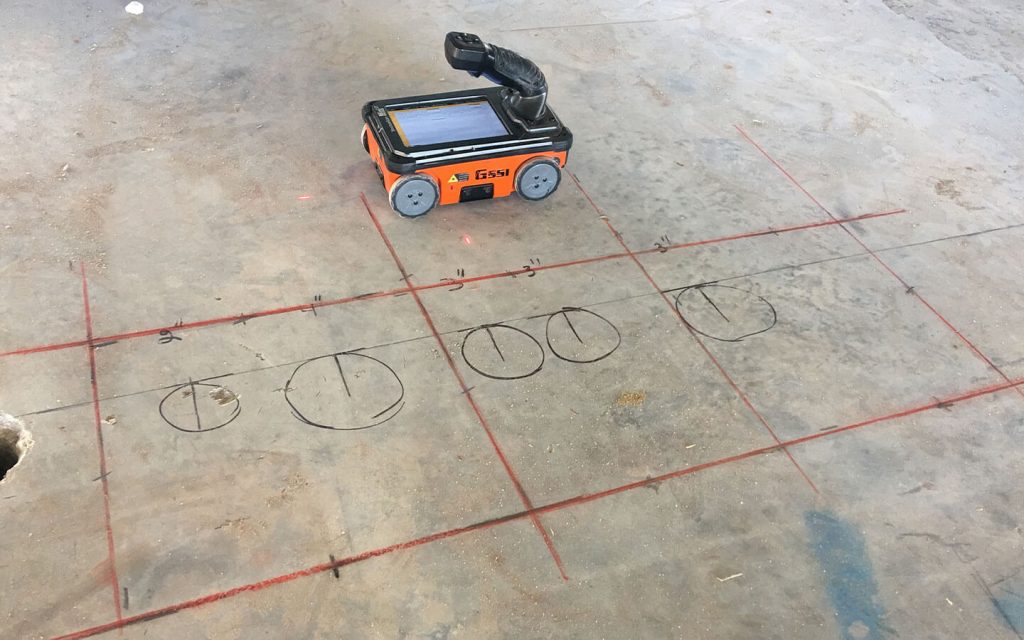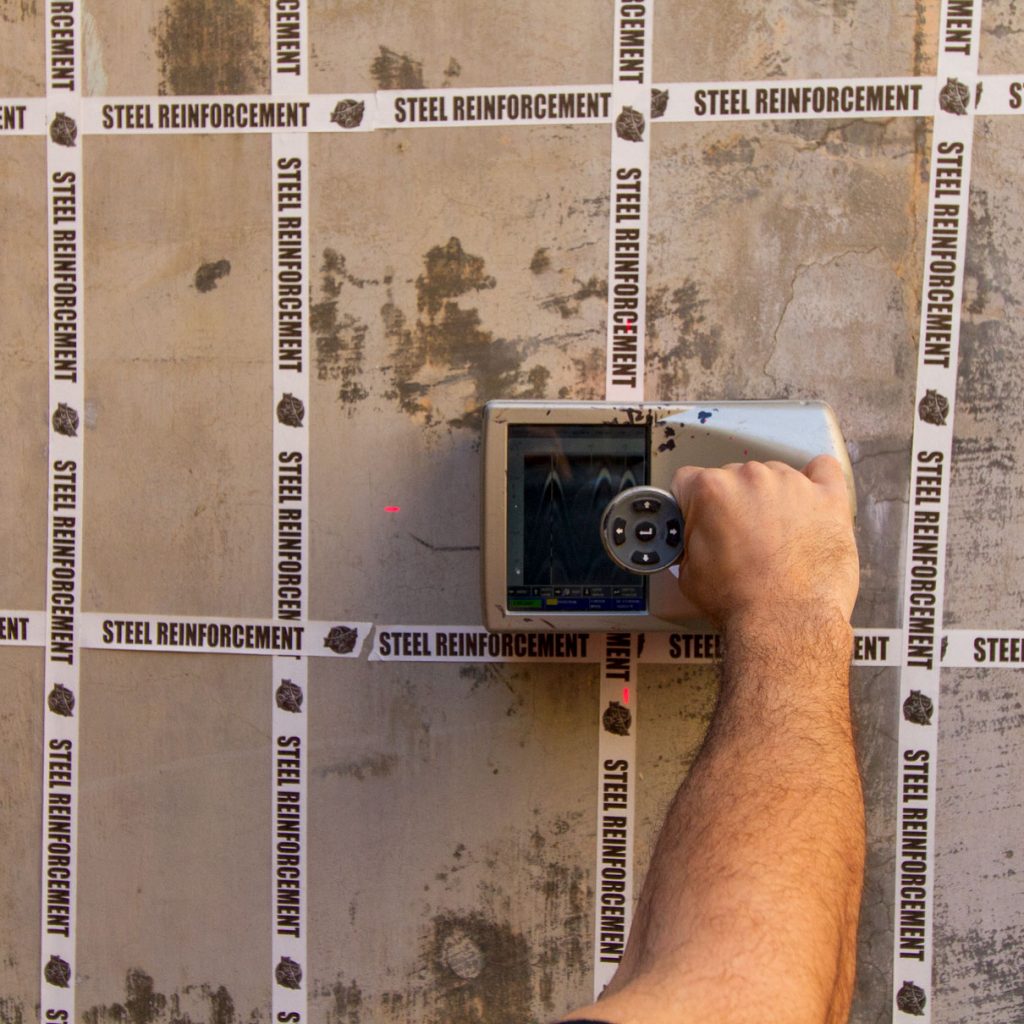Comprehensive Guide to Concrete Scanning Technologies
Comprehensive Guide to Concrete Scanning Technologies
Blog Article
Introduce the Transformative Power of Concrete Scanning in Taking Full Advantage Of Efficiency and Safety And Security
Concrete scanning has actually emerged as a critical device in the building industry, offering unparalleled advantages in enhancing project performance and making sure security criteria. The transformative power of concrete scanning exists in its capacity to supply real-time data and thorough understandings, revolutionizing exactly how tasks are intended and implemented.
Value of Concrete Scanning
Guaranteeing the structural honesty and safety of construction jobs starts with the critical step of carrying out thorough concrete scanning. Concrete scanning is a non-destructive method used to spot and map subsurface elements within concrete structures.
In addition, concrete scanning assists in enhancing job timelines and budget by preventing unforeseen prices and hold-ups that may emerge due to unanticipated blockages within the concrete. Eventually, investing in detailed concrete scanning is a positive method that improves both effectiveness and safety and security in building jobs.
Just How Concrete Scanning Works
Concrete scanning operates as an important device in construction jobs by utilizing innovative innovations to find and map subsurface components without creating structural damage. Ground Passing Through Radar (GPR) and Electromagnetic Induction (EMI) are two main methods utilized in concrete scanning. GPR works by sending out high-frequency radar pulses into the surface area, which get better when they encounter subsurface items or gaps. The time considered the signal to return suggests the deepness and place of the objects. EMI, on the various other hand, utilizes electromagnetic areas to identify variances in product structures, such as determining rebar or conduits within concrete frameworks.
Throughout the scanning procedure, the information accumulated is assessed in real-time, enabling prompt recognition of prospective threats or barriers beneath the surface area. By using these innovative technologies, concrete scanning substantially minimizes the risk of expensive damages and injuries on building websites.
Benefits of Concrete Scanning
Using advanced scanning technologies in building and construction projects provides a multitude of benefits, enhancing both efficiency and safety on-site. One of the main advantages of concrete scanning is the capability to find and find embedded things such as rebar, post-tension cords, and channels accurately. By identifying these components prior to exploration or reducing right into concrete frameworks, the danger of accidental strikes is significantly reduced, stopping prospective injuries to employees and damages to the structure itself. Additionally, concrete scanning helps in preparation and developing better, as it gives precise information concerning the location and depth of architectural parts.

Study: Concrete Scanning Success

In an additional situation, a building and construction firm utilized 3D concrete scanning to evaluate the condition of aging concrete frameworks in a historical structure. The comprehensive scans supplied beneficial understandings right into the level of deterioration and aided focus on upkeep initiatives effectively. By proactively dealing with areas of problem determined through scanning, the firm was able to extend the life-span of the structure and make sure passenger safety and security.
These study emphasize the transformative power of concrete scanning in improving effectiveness, precision, and safety and security in construction projects.
Implementing Concrete Scanning in Projects
Implementing innovative scanning modern technologies throughout building and construction tasks has actually become increasingly important for improving accuracy and safety. By integrating concrete scanning into task planning and implementation, building groups can determine possible risks, such as rebar or post-tension wires, concealed Discover More Here within concrete frameworks. This aggressive approach lessens the threat of accidents, delays, and expensive rework, eventually leading to a lot more efficient project timelines and budgets.
To implement concrete scanning properly, task supervisors must work together very closely with knowledgeable scanning specialists to establish one of the most appropriate scanning techniques for the specific task requirements. Engaging scanning professionals from the onset of a job enables the team to produce thorough scanning strategies that resolve key locations of problem and ensure complete information collection.
Furthermore, including concrete scanning right into regular task operations can improve decision-making procedures, as real-time scan information gives prompt understandings right have a peek here into the condition of concrete structures - Concrete Scanning. This data-driven method facilitates informed analytical and makes it possible for groups to make changes quickly, promoting a culture of performance and security throughout the project lifecycle

Conclusion
In verdict, concrete scanning plays an essential duty in boosting performance and security in building projects. By utilizing sophisticated innovation to find and map out underlying frameworks within concrete, this procedure helps to stop expensive errors, make certain architectural stability, and reduce risks on site. With the capacity to reveal hidden elements and give accurate information, concrete scanning shows to be an important device for optimizing job results and optimizing general success.
Concrete scanning is a non-destructive technique utilized to discover and map subsurface elements within concrete frameworks. Furthermore, concrete scanning helps in optimizing job timelines and budget by preventing unexpected expenses and delays that may develop due to unexpected blockages within the concrete. One noteworthy case research study involves a large-scale restoration job where concrete scanning played an essential duty in making certain task success.In one more situation, a construction business made use of 3D concrete scanning to assess the condition of maturing concrete frameworks in a historical structure. By integrating concrete scanning right into task planning and implementation, building groups can recognize potential threats, such as rebar or post-tension cables, concealed within check it out concrete frameworks.
Report this page